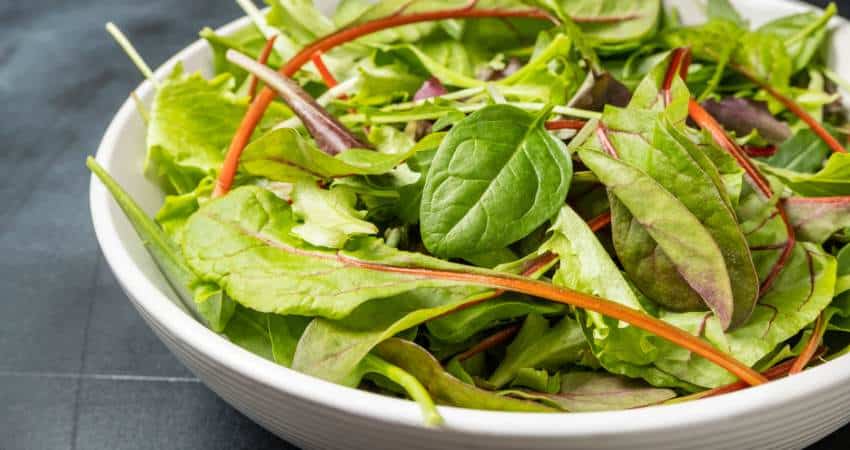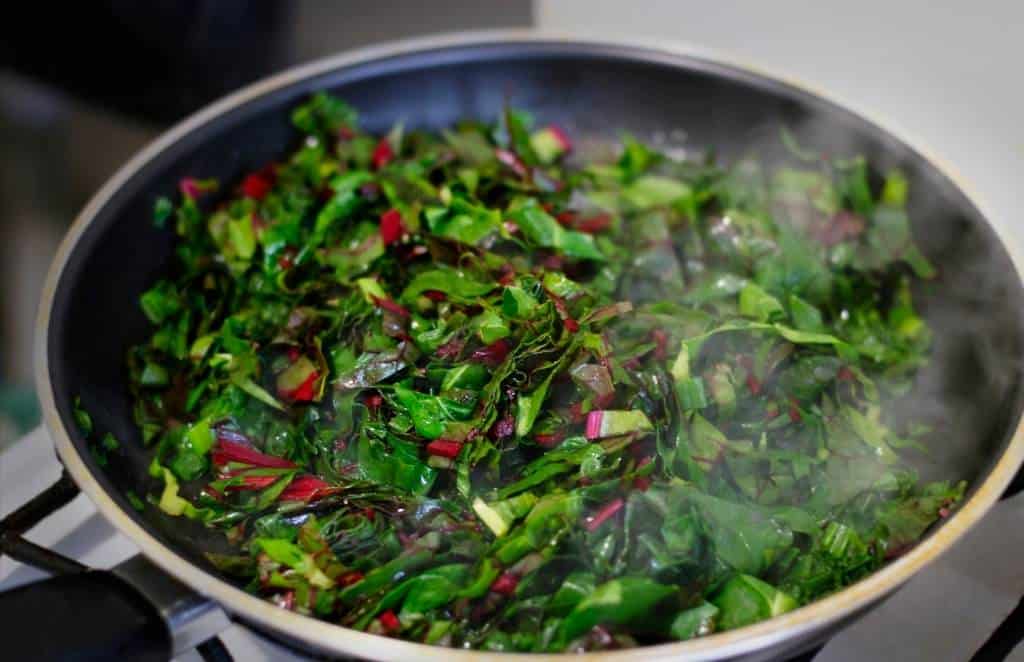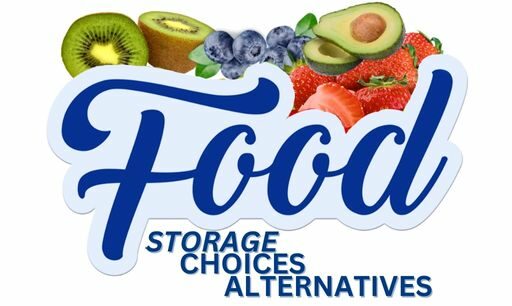5 Best Alternatives for Spinach When Cooking
Sometimes, people are forced to choose alternatives for spinach when cooking. As a Certified Health Coach, I’ve identified five of the best.
The best alternatives for spinach when cooking include kale, swiss chard, arugula, romaine lettuce, and escarole. These alternatives have similar nutrients to spinach like vitamin A, K, iron, and calcium.
Many vegetables can be used in place of spinach, but only a few meet the nutritional requirements. This article will take you through five of the best alternatives for spinach when cooking.
Choosing Alternatives for Spinach When Cooking

As a Certified Health Coach many clients ask me about food alternatives including spinach. Also, I purchase and consume it almost every day. Therefore, I have researched this topic in the past and present. Let’s examine the alternatives closely.
Spinach contains significant amounts of vitamin A and vitamin K that only a handful of greens meet. It’s also rich in other essential minerals such as potassium and iron1.
Getting the perfect replacement is not always so easy to get equally the same nutrients as you would with spinach. Besides, some of these replacements might not be fruits or vegetables, but a mixture of fortified grain meals, meat, and beans.
There are several reasons people choose to use other alternatives instead of spinach in their daily dishes. For instance, when the FDA issued a public report about baby spinach due to the E. coli outbreak, many people had no option but to get a suitable replacement2.
Your choice is determined by the vegetable’s taste, where and when it’s available, health benefits obtained, and the kind of dish you’re serving.
For instance, some alternatives like kale will fit best in hot meals. Kale is not tender, so it needs to be cooked to bring out the taste, which leads us to the first alternative.
Kale
Kale and spinach are like two sides of the same coin. In most cases, people will opt for spinach because it’s tender and easier to cook, steam, or eat raw. On the other hand, kales are tougher.
Still, they contain a high concentration of iron and vitamin K, antioxidants, and fiber3. These nutrients give your body the upper edge in fighting against conditions.
Serving kale is easy because you can eat raw (in salad and smoothies), boiled, steamed, or as part of a delicious soup. If you have underlying medical conditions, always consult your doctor before taking kale since taking too much could pose a risk to your health. For instance, heavy potassium intake could lead to severe effects on people with kidney problems.
Always remember to wash your vegetables properly before cooking. Kale was recently ranked as one of the most pesticide-contaminated vegetables. Large quantities of pesticides are used to keep pests away, and they could end up on your plate if you don’t wash your vegetables thoroughly4.
Kale has a long list of health benefits that should come to your body5. It has several other uses in salad and meat dishes.
The next time you drop spinach off the menu, use kale as the next alternative.
Many people ask how much kale they should eat. Find out in my article, This is How Much Kale You Should Eat Per Day.
Escarole
Escarole has a slightly bitter, leafy taste. Commonly found in Italian cuisines, escarole tastes good when grilled, sauteed, raw, or cooked to make a simple soup. Escarole contains several nutrients such as vitamins A and C, calcium, iron, and fiber6.
Most people prefer it raw because that’s when the taste comes out best. The next time you go shopping, look for escarole in the refrigerated vegetable section.
Look for the leaves that show no signs of wilting or withering. When you take it home, store in the refrigerator and only wash when you’re ready to cook.
Swiss Chard
Swiss chard looks a lot like spinach. The main difference is in the stem color; spinach has white stems while chard has either red, yellow, pink, or purple color. In terms of nutrition, the Swiss chard is not far from spinach7.
It is a popular choice in recipes that require mild-tasting greens, but if spinach is unavailable, Swiss chard could be a suitable replacement.
Swiss chard is packed with nutrients and vitamins. It contains antioxidants, vitamin C, E & K, fiber, and an endless list of nutritional benefits8.
Just like spinach, adding Swiss chard to your diet is quick and straightforward. Start by looking for the darkest chard leaves you can find at the grocery if you don’t intend to eat the same day and store it in a refrigerator for prolonged freshness.

Disclaimer: Some links in this article are affiliate links which means I may earn a small commission at no extra cost to you. As an Amazon associate I earn from qualifying purchases.
You can blend Swiss chard with other ingredients for a popular healthy drink. If you’re looking for a good quality juicer, Breville has a nice variety and very stylish. Check them out on Amazon, Breville Juicers.
Others add Swiss chard to omelets, fruit and vegetable salads, and sandwiches. The leaves and stalks of are rich in vitamins and minerals for healthy living. It goes well with all kinds of stew, salad, pasta, and meat recipes. If you can’t find spinach at the nearest store, buy Swiss chard.
Arugula
Arugula (also called the rocket, rucola, or roquette) is quite similar to spinach in terms of nutritional value and uses. Apart from making salads, both spinach and arugula can be used in meat cuisines and omelets. However, one of the most significant differences lies in the taste.
Arugula has a pepper-like taste. This popular vegetable has numerous benefits because of its nutritional content9.
Unfortunately, arugula still remains unknown to many people around the world. Due to its tenderness and peppery flavor, arugula stands out from other vegetables.
It’s commonly found in Italian and French dishes. Others use it raw or slightly cooked to prepare delicious salads, sandwiches, pasta, pizza toppings, and casseroles.
If spinach isn’t an option at the moment, slicing arugula into your diet or blending it into your drinks is a great idea. When shopping, look for dry arugula leaves with darker green color, unwithered, and little blemishes (like brown spots or dry edges).
Romaine Lettuce
When spinach is unavailable when making your salad, Romaine lettuce could serve as the next alternatives. Romaine lettuce has a more robust and crispier taste than spinach, and it contains vitamin A and C, folic acid, and fiber for healthy living10. It has long heat-tolerant leaves that make the perfect salad.
Widely grown in California, Romaine lettuce is available at the local supermarket or grocery throughout the year. Many people use it as a salad while others grill it. Some of the delicacies include chicken salad, beef ribs, stir fry, Nicoise salad, avocado salad, and Greek salad.
Before making any purchase, observe your hygiene, and follow strict health measures to keep you and your family safe. This year (2020), the Centers for Disease Control (CDC) released an update on the E. coli outbreak linked to Romaine lettuce11. Everyone has a responsibility to wash their fruits and vegetables properly before eating.
If you have any questions to ask me about this article don’t hesitate to comment below or email us. You can find an email on our contact page.
Read Next
Is It Permissible To Substitute Fruit For Vegetables?
10 Best Alternatives for Avocado in Sushi
5 Best Alternatives for Pomegranate in Salad
- National Center for Biotechnology Information: Functional properties of spinach phytochemical and bioactives [↩]
- FDA: Dole Fresh Vegetables Announces Precautionary Limited Recall of Baby Spinach [↩]
- Taylor & Francis Online: Kale: An excellent source of vitamin c, pro-vitamin A, lutein and glucosinolates [↩]
- Environmental Working Group: 2020 Shopper’s Guide to Pesticides in Produce [↩]
- National Center for Biotechnology Information: Lentil and Kale: Complementary Nutrient-Rich Whole Food Sources to Combat Micronutrient and Calorie Malnutrition [↩]
- National Center for Biotechnology Information: Grown to Be Blue – Antioxidant Properties and Health Effects of Colored Vegetables. Part ll: Leafy, Fruit, and Other Vegetables [↩]
- Food Source Information: Swiss Chard [↩]
- National center for Biotechnology Information: Effect of Swiss Chard as Nitrite Replacement on Color Stability and Shelf-Life of Cooked Pork Patties during Refrigerated Storage [↩]
- National Center for Biotechnology Information: Novel insights into plant-associated archaea and their functioning in arugula [↩]
- National Center for Biotechnology Information: Defining Powerhouse Fruits and Vegetables: A Nutrient Density Approach [↩]
- CDC: Outbreak of E. coli Infections Linked to Romaine Lettuce [↩]
